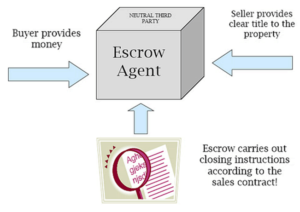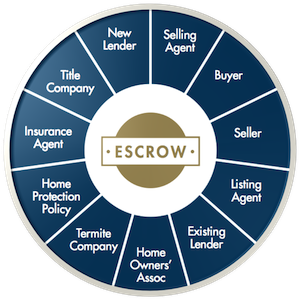10 Steps to Closing Escrow!
So you are midway through the Home buying process and have found your dream home…now what? The escrow process can be a confusing and stressful time during a Real Estate transaction. Whether you are a buyer or seller it is important to understand the steps that lie ahead. The escrow process begins just after you accept an offer and ends when the buyer receives possession of the home. Lets get started!
-
a bond, deed, or other document kept in the custody of a third party, taking effect only when a specified condition has been fulfilled.
Basically, Escrow is a trusted neutral third party that holds funds in a secure Escrow account and only releases the funds once all the terms of the agreement are made. Protecting both buyer and seller.
1. Opening Escrow & Title:
The Escrow company is usually already selected at this point. Do not feel obligated to use the Escrow company the other party includes in their offer/counter, but understand that if you are the buyer in a competitive market you may want to please the sellers and selling agents as much as possible by going with their Escrow company of choice.
Once you select an escrow company, opening escrow is relatively fast and easy. To open escrow your agent will send the purchase agreement to the escrow officer via email, fax, mail or in-person delivery and will include the following:
— Property address
— Purchase price
— Escrow period (typically 30-45 days)
— Name of all sellers and their contact information
— Name of all buyers and their contact information
— Name and contact information of any agents involved
— Commission that will be paid to any agents
This will help clarify the details for the escrow officer and get the process started smoothly!
2. Prepare Disclosures:
You have to complete a list of legally required disclosure forms that will be provided to your buyer for their review. Disclosure forms and rushed timelines can be intimidating for sellers, so we ALWAYS use our Transaction Coordinator; Robyn Hosking to help manage the process. Disclosure statements, are the buyers opportunity to learn as much as they can about the property and the seller’s experience in it. Potential seller disclosures range from knowledge of water damage to work done without a permit, to information about construction or development nearby. Disclosures also protect the sellers from future legal action. It is the sellers chance to reveal anything that can negatively affect the value and use of the property.
3. Pest Inspection:
Pest inspections and clearance certificates are often required to close escrow in areas affected by termites. Sellers are usually required to provide the pest inspection report to the buyer within 7 days of accepting an offer. We recommend doing this prior to listing the home for sale so there aren’t any surprises during escrow. Doing so will also give you an opportunity to repair any damage caused by termites ahead of time and not delay the close of escrow.
4.Escrow Package:
Your escrow officer will mail or a deliver to you a package, typically within a week of opening escrow, with several documents for you to complete and sign. You’ll need to review each document carefully and ensure the escrow instructions exactly match the terms of the purchase agreement. Your agent and the transaction Coordinator will do the same.
5. Buyer’s Inspections:
Depending on where you live, your buyer will typically be given 5 to 17 days from the time you accept their offer to conduct their inspections. The buyer can change the number of days on the offer, so be sure to read your contract to confirm the timeline. These inspections can include a walk-through inspection by a third party home inspector, HVAC, Electrical and plumbing, pool and spa, roof and an appraisal.
6. Buyer’s Request for Repairs:
The buyer has the right to request repairs within their inspection period. However, you should know that you are not obligated to make any or all of these repairs. Again, it is good practice to complete any repairs that you anticipate a buyer would request ahead of listing the home for sale. This gives your buyer fewer reasons to back out during escrow and will make your home more appealing during the marketing process.
7. Contingency Removal:
There are several contingencies in a purchase agreement that give the buyer a way to back out of escrow without penalty. As such, it is critical that you ensure the buyer remove their contingencies the moment their contingency period expires.
Here’s a list of standard contingencies and their associated timeframes:
— Loan (21 Days)
— Appraisal (17 Days)
— Buyer’s investigation, including insurability (17 Days)
— Condo Disclosures and CC&Rs (17 Days)
— Reports/Disclosures including seller disclosures, a physical inspection report and pest report (17 Days)
— Title report (17 Days)
— Sale of Buyer’s Property (Varies) always be sure to check if the purchase is contingent upon the sell of the buyers current home. This isn’t always a deal breaker depending on the situation. Ask questions, your agent will be able to explain the possibilities if the sale is contingent.
These contingencies must be actively removed, which means they do not simply expire at the end of the contingency period. A contingency removal form must be completed and signed by all buyers before they are removed. Your agent and transaction Coordinator will stay on top of the timeline and insure the buyers remove contingencies as agreed upon.
8. Buyer’s Final Walk-Through:
The buyers have the right to do a final walk-through the property within 5 days before the close of escrow. This is where the buyer gets to confirm the the repairs agreed upon have been completed and the property is in the same condition as it was in the beginning of escrow (ex…finding broken windows not previously broken, appliances removed not agreed upon, etc).
9. Close Escrow:
You have made it to the final stages of escrow. All the above steps have been completed, the buyers loan (if applicable) has funded, you have received confirmation that the grant deed has been recorded. You will then receive a final settlement statement from escrow that breaks down the costs and the net proceeds from the transaction.
You have a couple of options for how you will receive funds. You have have escrow wire the proceeds directly to your bank account, or they can cut you a check. If you will be choosing the wiring option, please give your escrow company ample notice some banks require advance notice and you will receive wire instructions prior.
10. Possession:
The purchase contract will state the exact date and time the buyer receives possession of the property. Normally that happens the same day as the close of escrow, however some transactions may arrange differently. In some cases the seller needs more time, and an agreement may be made outlining the terms of possession such as how many days and the rent the seller will pay for that time period.
CONGRATULATIONS!! YOU ARE NOW A HOMEOWNER!
 Call or Email The Inman Team to help you with your Real Estate needs.
Call or Email The Inman Team to help you with your Real Estate needs.
Read our Steps to Buying a Home Guide here if you are not quite ready to Open Escrow!!
*Information deemed reliable but not guaranteed, always talk to your Real Estate Agent or Escrow Officer to verify information*







